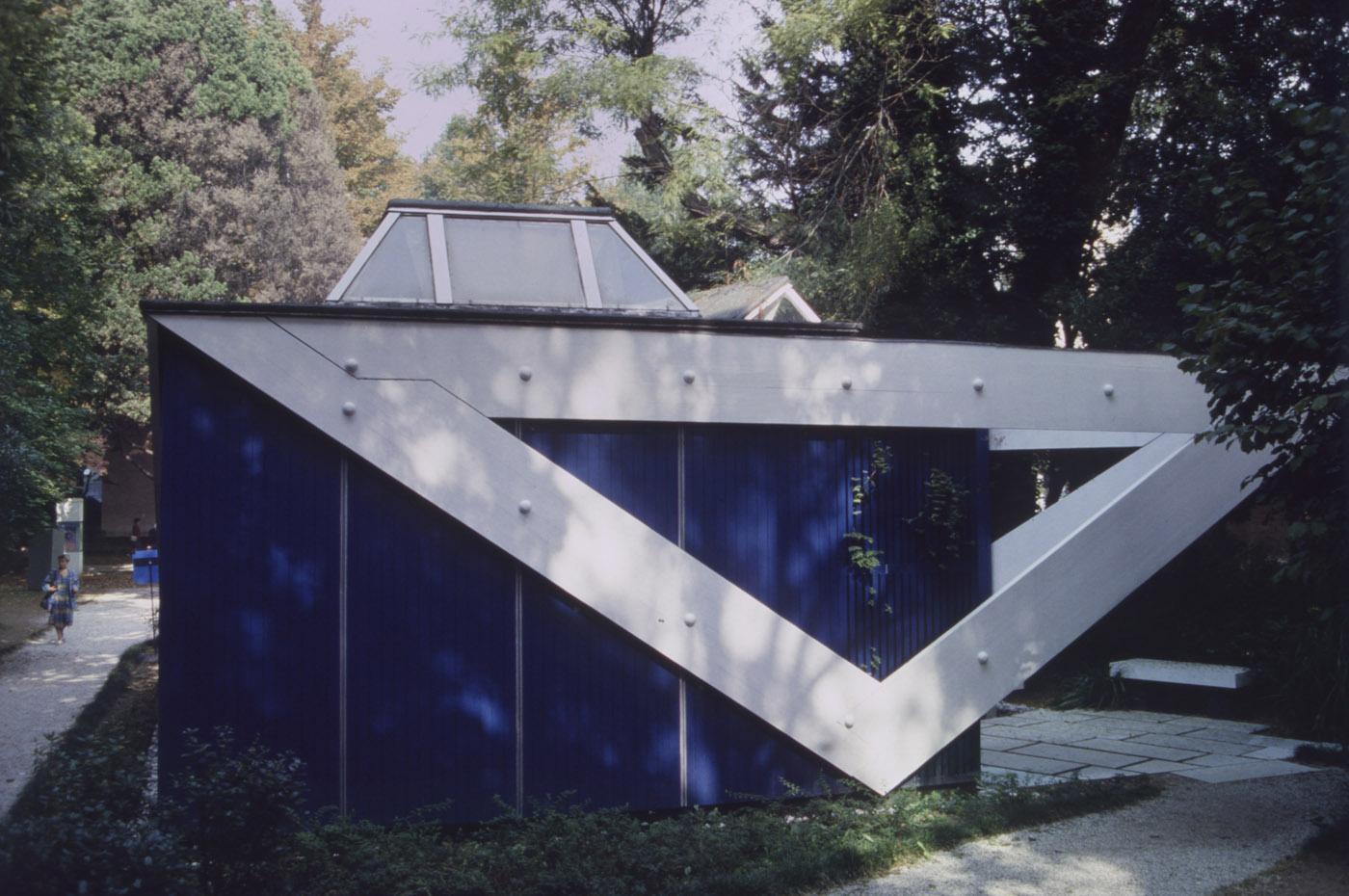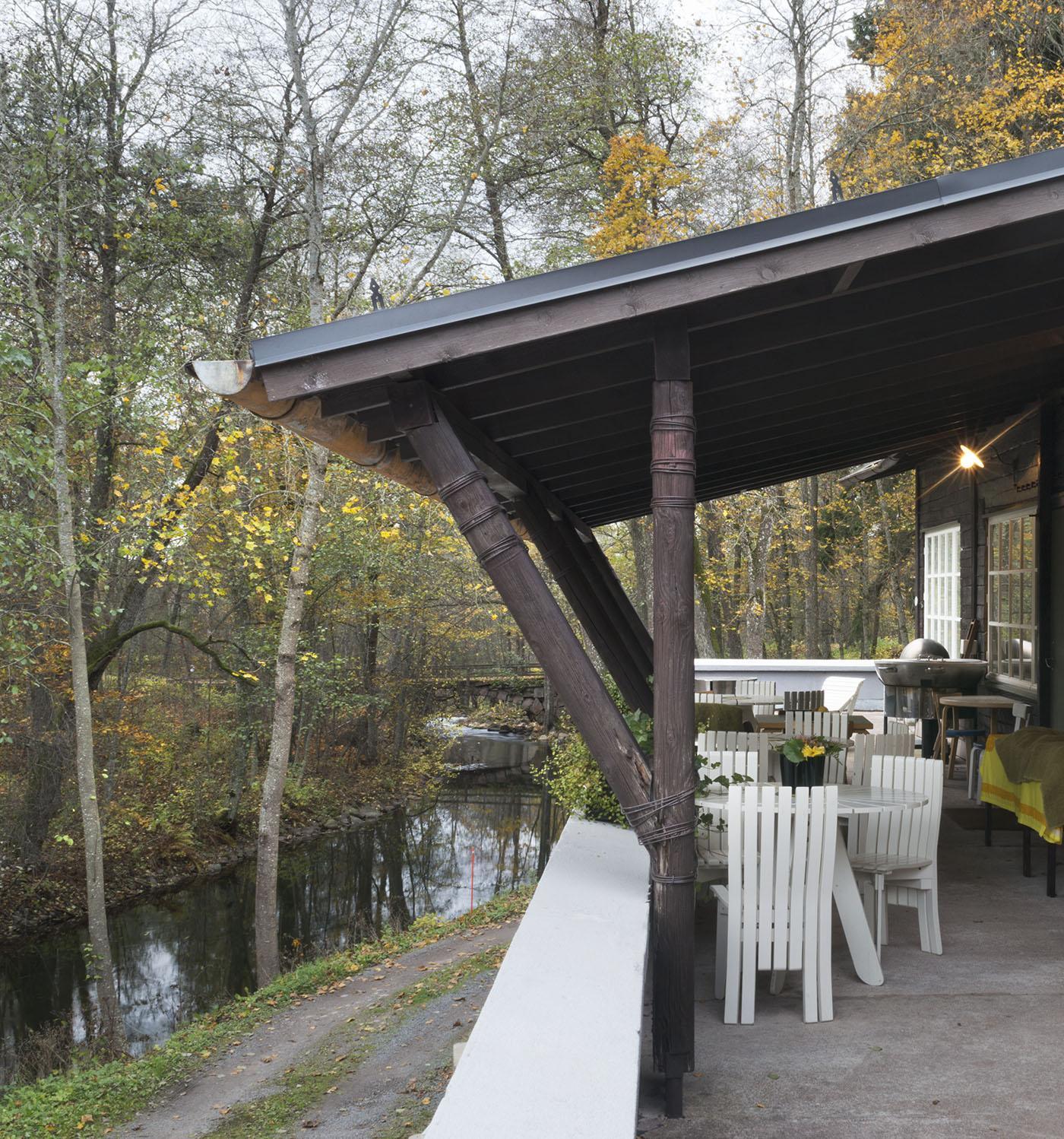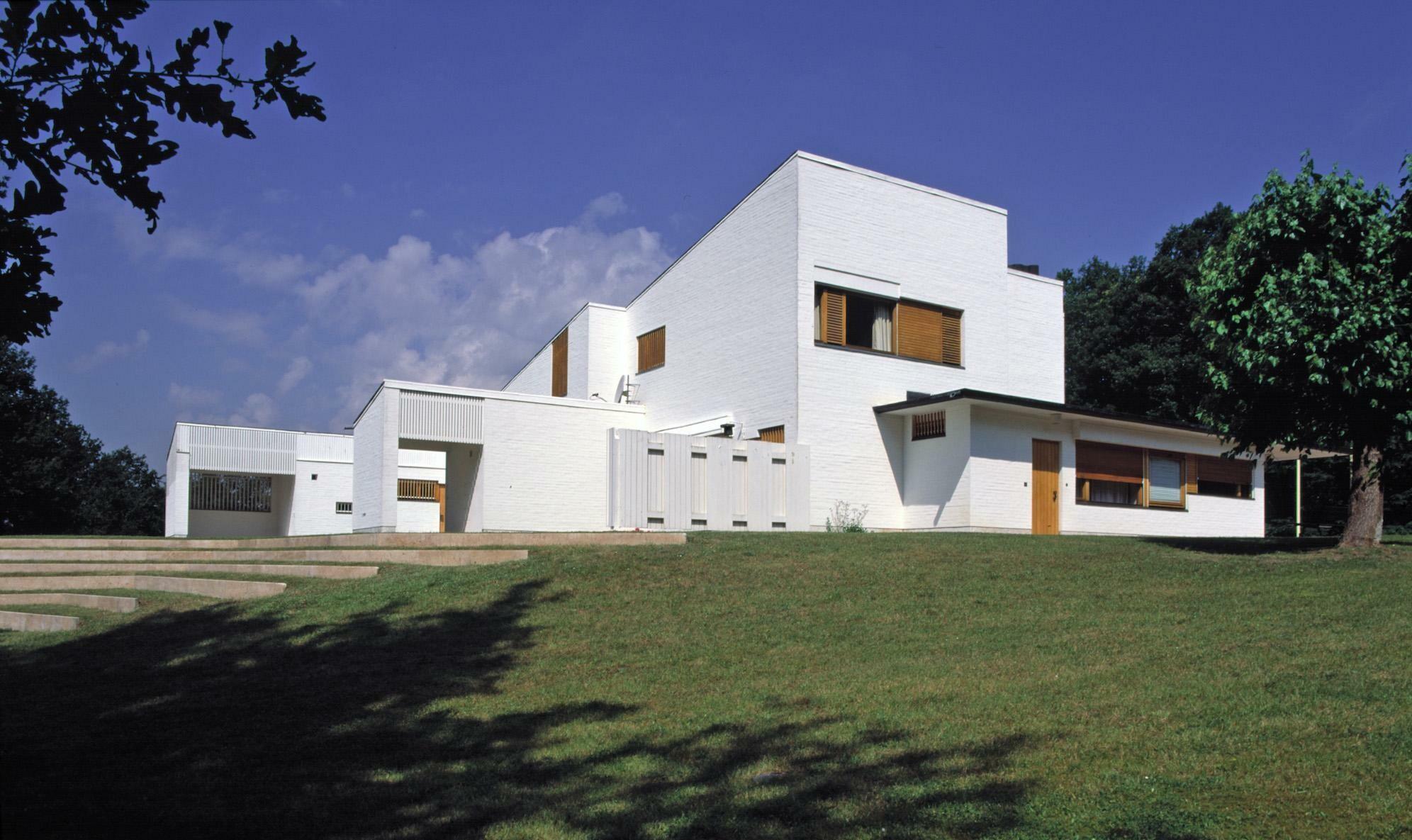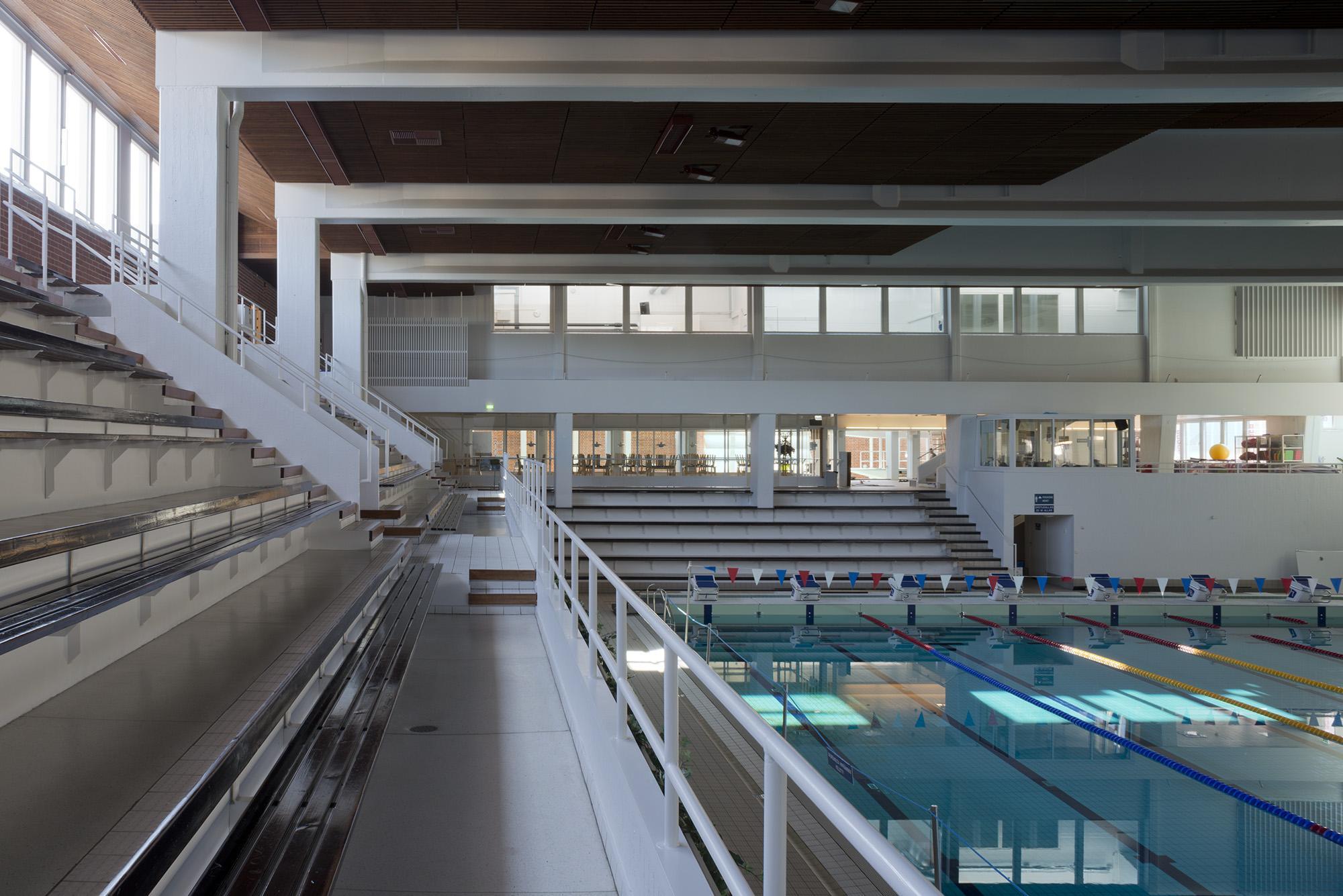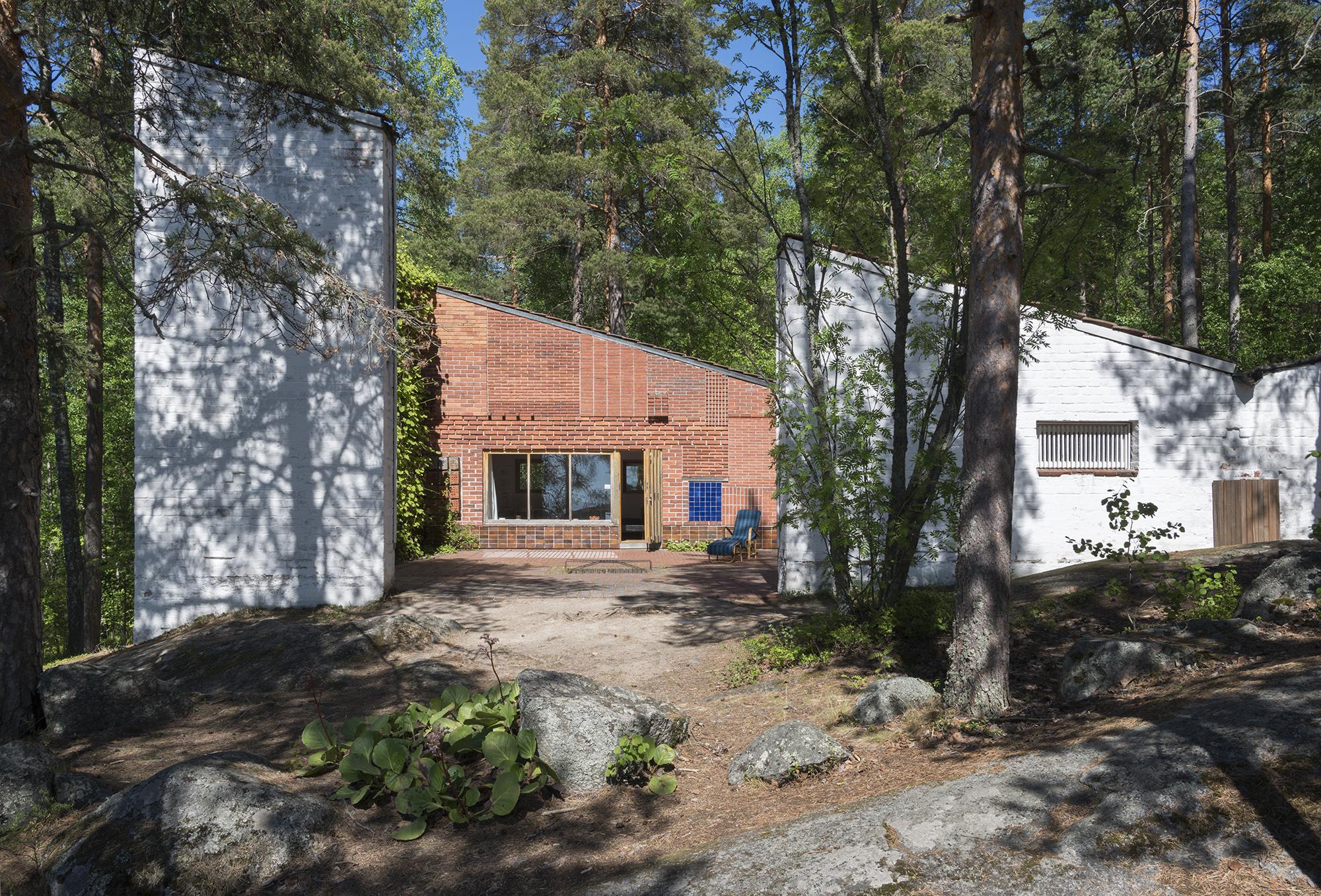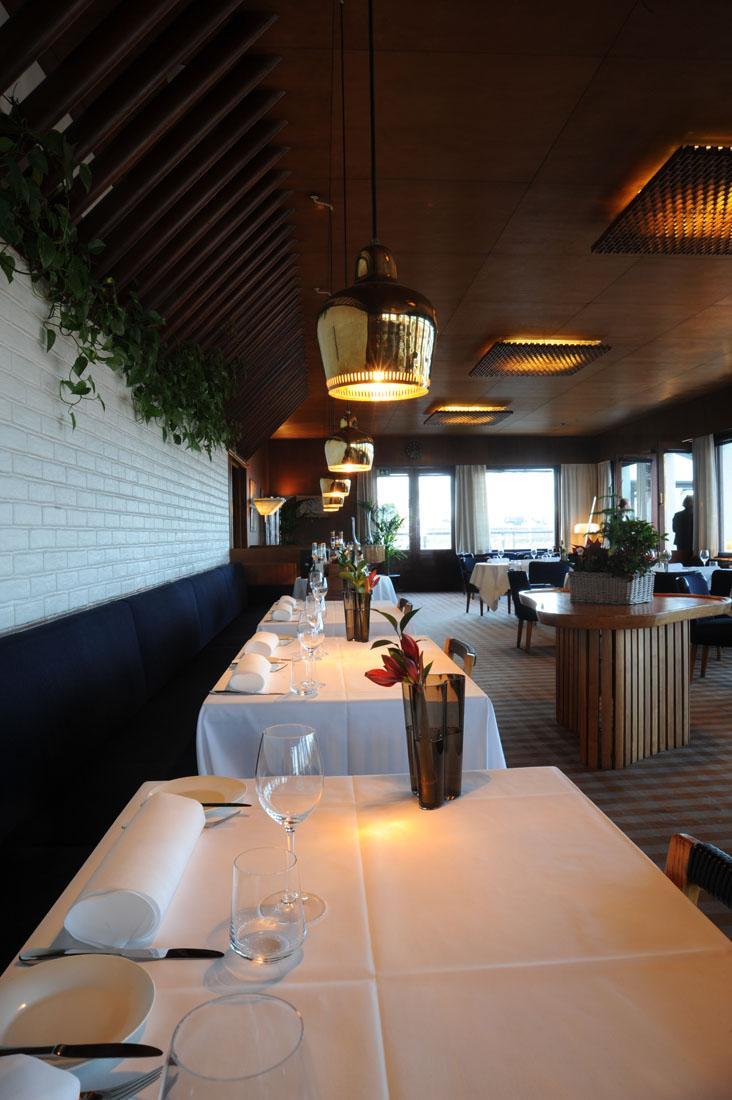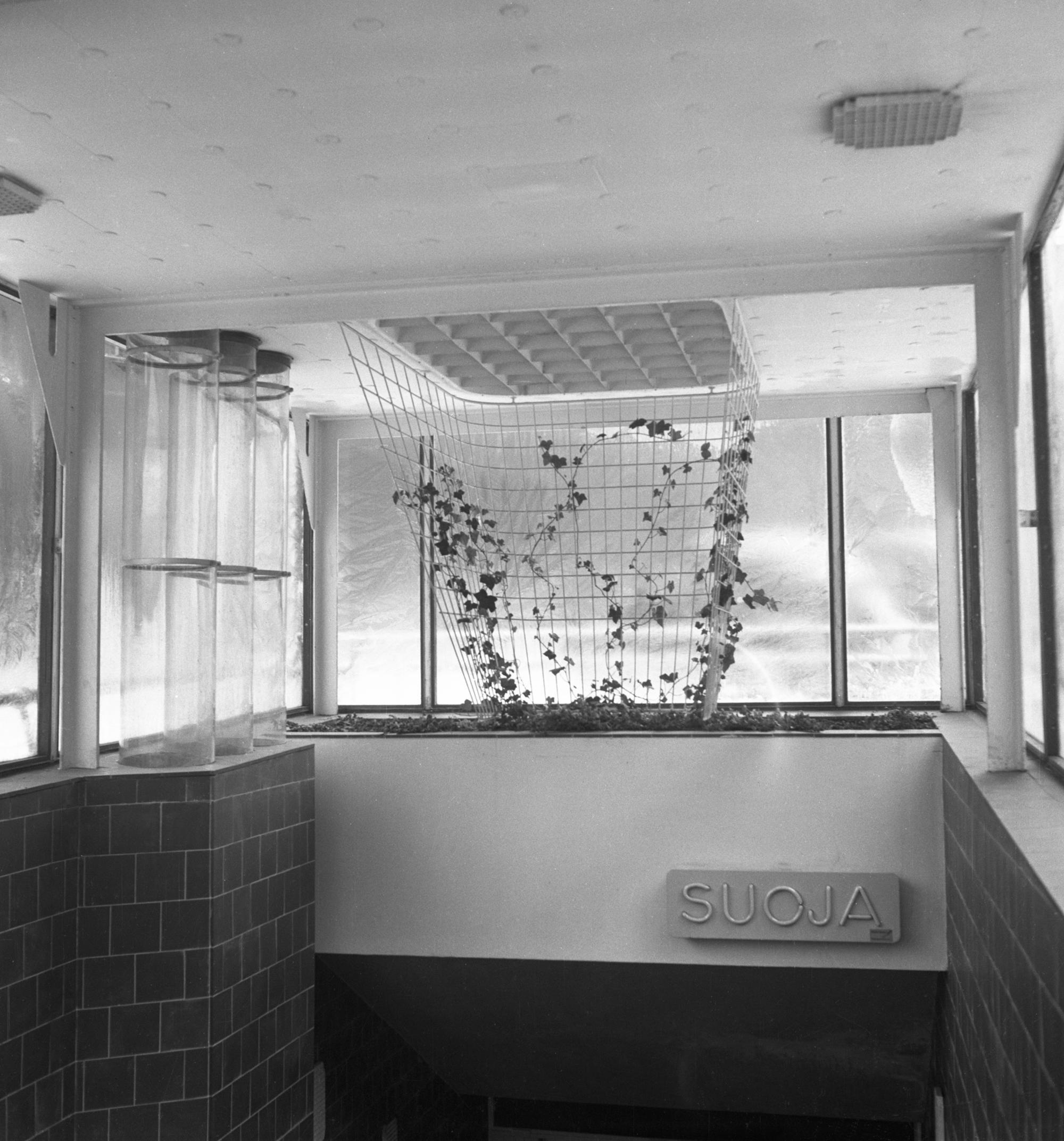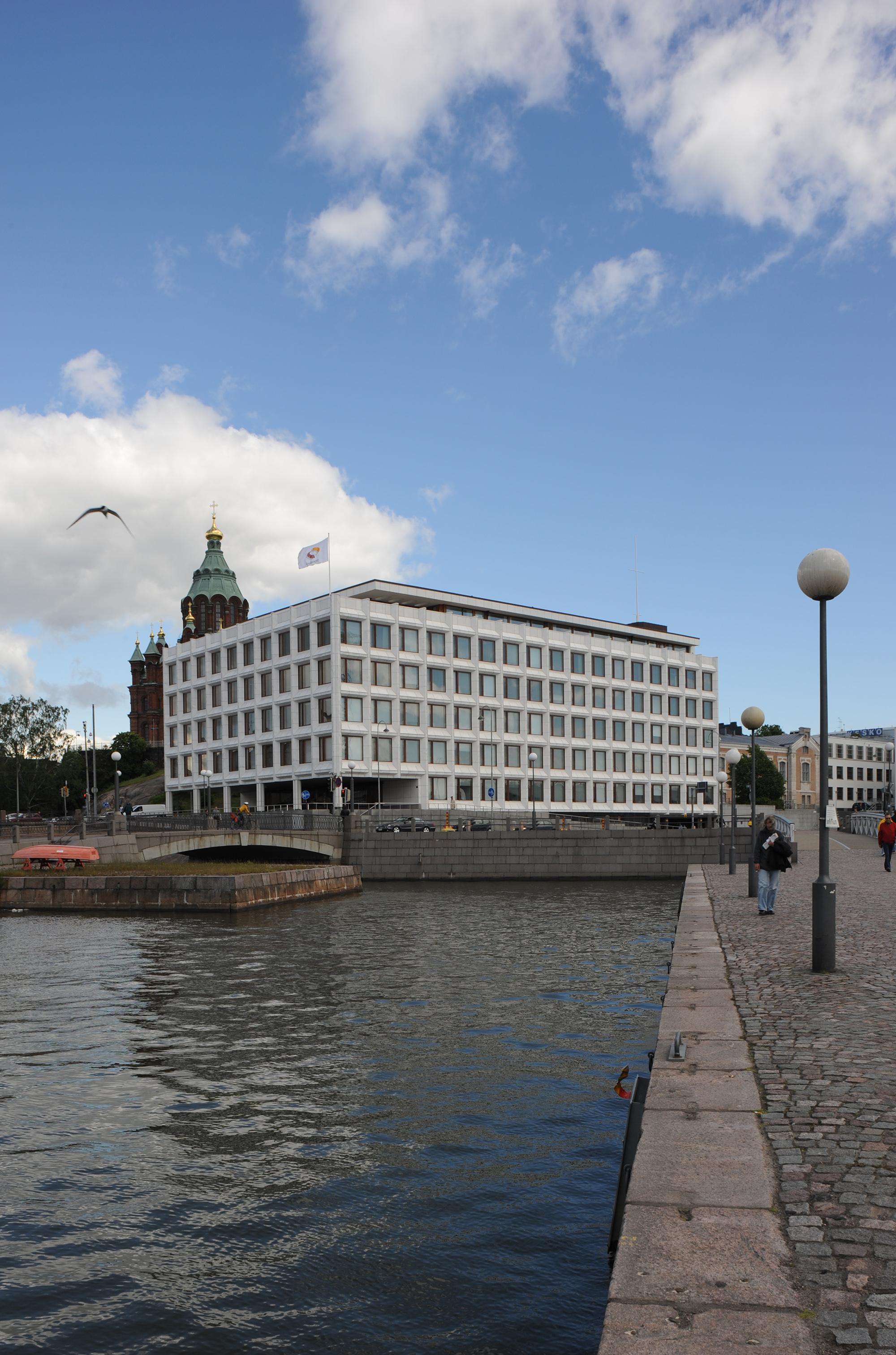The Finnish pavilion, designed at the initiative of art patron Maire Gullichsen, was set up in the Giardini parkland to house the Finnish exhibition section of the Venice Biennale International Art Festival in the spring of 1956. Alvar Aalto had only a couple weeks’ time to produce the plans for the pavilion.
According to Aalto’s plan, the pavilion should be an exhibition space that was movable, easy to dissemble, store and re-assemble: “Like a tent,” as he put it. The walls and roof of the light-structured pavilion were made of wooden elements. The building’s architectonic idea was a whole composed of blue wall lamellas and white triangles. Skylights brought natural light into the space and left the wall surfaces free for hanging the exhibition.
Originally meant as a temporary structure the Finnish Pavilion still stands in the same place in the Venice Biennale area, and has over the decades hosted a variety of exhibitions. Nowadays the Finnish Pavilion is a popular attraction and it is considered to be an important part of the International Architecture Exhibition as well.
Throughout its relatively short history, the Finnish pavilion has undergone three major restorations. The building was restored at the Italians’ initiative in 1975-76, as a project by Finnish architectural students led by Panu Kaila in 1993 and again by Gianni Talamini in 2012. The pavilion is the only building Aalto completed in Italy during Alvar Aalto’s lifetime and its preservation is, in the words of Elissa Aalto, “a tribute to Alvar Aalto and a reminder of his relationship with Italy”.
Alvar Aalto loved Italy, and Venice most of all. Alvar and Aino Aalto travelled to Italy on their honeymoon in 1924 and visited Venice as well. Aalto returned to Venice often also with his second wife Elissa Aalto in the fifties and sixties in particular.
”For me in my mind there is always a journey to Italy. It may be a past journey that still lives on in my memory; it may be a journey I am making or perhaps a journey I am planning”
Architect Alvar Aalto, 1954
